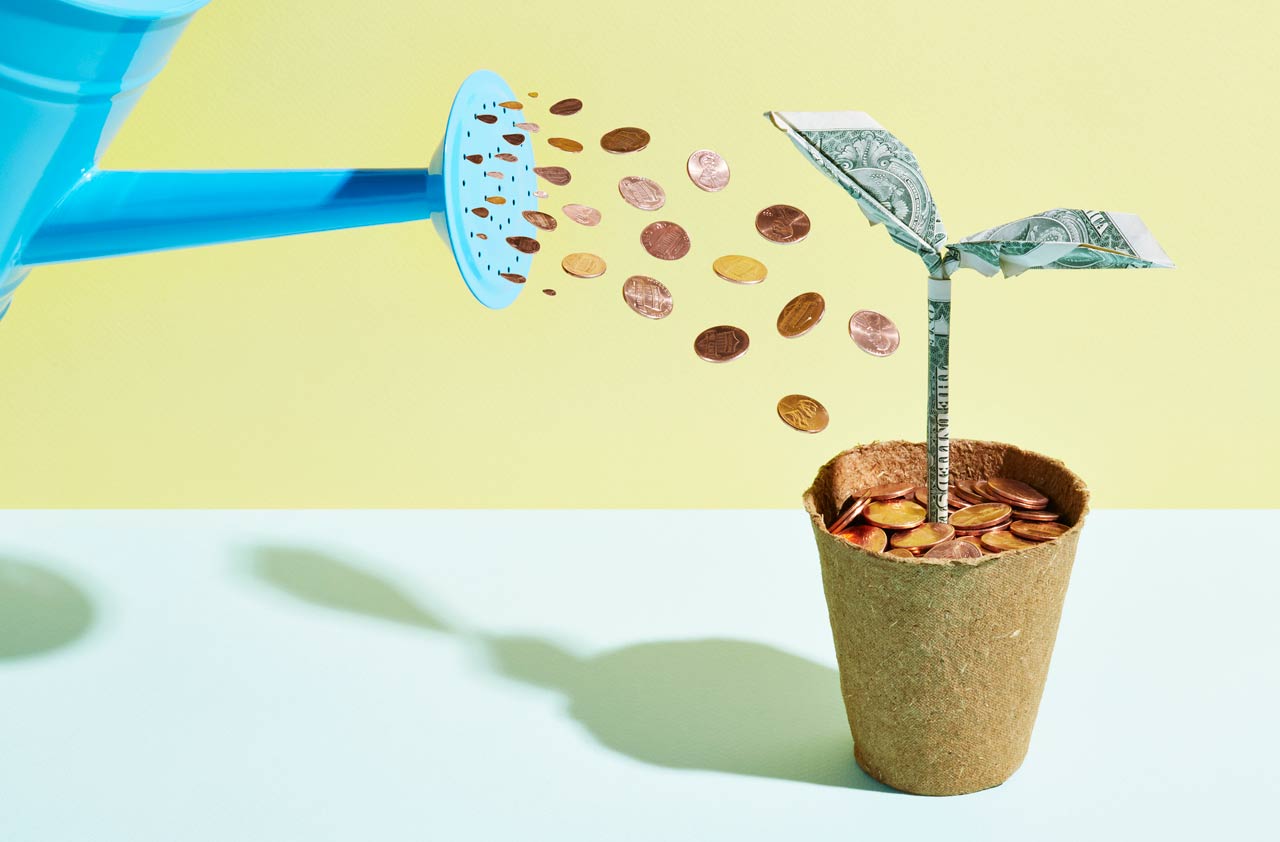What's Going on with Bonds During the Coronavirus?
To understand, you need to know a few bond basics. Here's a primer on how bonds work, and how disruptive events like the coronavirus and falling interest rates can affect their performance.


If you’re like most investors, you’ve probably been unnerved by the coronavirus-fear-driven gyrations in the markets. But while most commentators focused on stocks, much less ink and bytes were spent on the reaction of the bond market, which, more often than not, was summarized with head-scratching phrases like “bond yields fell today.”
If you’re not well-versed in bonds and other fixed income investments (and few investors are) such cryptic language may have led you to believe that investors were bailing out on bonds at the same time they were shedding stocks.
Actually, the opposite was occurring.

Sign up for Kiplinger’s Free E-Newsletters
Profit and prosper with the best of expert advice on investing, taxes, retirement, personal finance and more - straight to your e-mail.
Profit and prosper with the best of expert advice - straight to your e-mail.
Perplexed? You’re not alone. Unlike stocks, whose performance can be easily understood in terms of rising and falling prices, bonds employ a complex mix of characteristics — such as yields, coupon rates, par values and maturities — whose descriptions and interactions often seem confusing and counterintuitive.
Even if you do have bonds or bond funds in your portfolio, you still may not understand what phrases such as “falling yields” and “rising interest rates” say about the state of the bond market. Or whether this affects you (or not).
So, here’s a little refresher course on how the bond market works.
Bonds 101
Bonds are essentially IOUs. The issuer — a company, a state government or the federal government — agrees to pay you a certain interest rate (coupon rate) based on the face value (also known as par value) of the bond over a certain time frame (the maturity).
Here’s an example. Say you buy a bond at its par value of $10,000, and it has a coupon rate of 3% and a maturity of 10 years. As long as you don’t sell it, you’ll receive an annual income payment of $300 every year, usually paid semi-annually, until the bond matures, at which time the par value will be returned to you.
Sounds simple, right? But here’s the thing: Very few people buy a bond at par value. Or when it’s first issued.
Like stocks, bond prices rise and fall with demand. Using the example above, say that $10,000 bond you have your eye on is trading at a higher price — also called a premium — of $11,000. If you buy it, you’re still getting paid $300 a year, but this lowers your actual interest rate — or yield — to 2.7%. You calculate yield by dividing the annual payment by the price you paid for the bond. In this case, $300/$11,000=2.7%.
Conversely, if you bought that same bond at a discounted price of $9,000, its yield would be 3.3% ($300/$9,000).
Whose yields are pundits pontificating about?
If you understand that yields go up as prices go down (and vice versa), it’s easier to grasp what’s happening in the bond market. When commentators say that “yields are falling” this means bond prices are rising.
But which bonds are they talking about? Generally, U.S. Treasury securities.
Why Treasuries?
Because U.S. Treasury securities are the safest investments in the world, backed by the full faith and credit of the U.S. government. When Treasury yields fall, this often means that investors are buying them as safe havens for their capital, even if they must pay premiums that reduce their yield.
How do interest rates fit in?
You’ll often hear bond market commentators talk about rising or falling interest rates. They’re usually referring to newly issued Treasury securities.
Coupon rates for new Treasuries reflect the current thinking of the Federal Reserve. When the Fed says it’s raising or lowering short-term interest rates, it’s specifically referring to the federal funds rate. This is the interest rate large banks charge each other for overnight loans. Coupon rates for new Treasuries reflect changes in the federal funds rate.
Why does this matter? Because when the Fed raises interest rates, newly issued Treasuries with higher coupon rates will be more attractive than existing Treasuries with lower coupon rates.
Over the past decade, the Fed has kept interest rates very low to keep the economy growing. While this is good news for borrowers, it’s not such good news for investors seeking decent returns from Treasuries.
The news gets even worse when the Fed cuts interest rates. When this happens, new Treasuries are issued with even lower coupon rates.
This makes existing Treasuries with higher coupon rates more attractive. As investors buy them, prices go up (and yields go down), and suddenly you hear commentators flouting a “bond market rally.”
Market corrections and bond market rallies
Under normal conditions, bond investors are usually very picky about yields. The exception usually occurs during stock market sell-offs. Then, scared investors often rush to Treasuries — regardless of their coupon rates — because of their relative safety.
We’re seeing this happen right now. Since the stock market freefall began in February in response to fears of the impact of the coronavirus and collapsing oil prices, the Fed has cut interest rates to nearly 0% to keep money flowing into the economy. As a result, Treasury yields have fallen, and prices have risen due to increasing demand. That’s why when you look at stock and bond index tickers during bad market days, you’ll often see that Treasury yields are in the red as well.
Do rising and falling yields affect bonds you already own?
If you have no intention of selling a bond you can relax. The yield you receive is locked in the moment you buy the bond. It doesn’t matter if its price rises or falls. Unless the issuer defaults on payments or decides to redeem the bond before it matures (also known as “calling”), you’ll still receive the same amount of annual income until it matures. At that time, you’ll get repaid the par value of the bond. Of course, if you bought a bond at a premium, you’ll get back less than what you paid for it (and vice versa). But that’s an entirely different discussion.
There are many factors other than prices, yields and maturities that investors need to consider when evaluating individual bonds. If you don’t feel comfortable conducting this research on your own, you may be better off working with a financial adviser to select the appropriate fixed income investments for your portfolio.
Disclosure: Certain sections of this article contain assumptions about the behavior of the stock and bond markets. These assumptions should not be construed as guarantees of future performance. Past performance is not indicative of future results. Because investment returns and principal values fluctuate, shares of any stock or bond may be worth more or less than their original value. Some investments are not suitable for all investors, and there is no guarantee that any investing goal will be met. Talk to your financial adviser before making any investing decisions.
Get Kiplinger Today newsletter — free
Profit and prosper with the best of Kiplinger's advice on investing, taxes, retirement, personal finance and much more. Delivered daily. Enter your email in the box and click Sign Me Up.

Dan Flanagan brings more than 25 years of financial planning, wealth management and accounting experience to his role as partner and financial adviser at Canby Financial Advisors. His investment, financial planning and tax experience has great appeal among the entrepreneurs and executives who are his typical clients.
Securities and advisory services offered through Commonwealth Financial Network®, Member FINRA/SIPC, a Registered Investment Adviser.
-
 6 Stunning Waterfront Homes for Sale Around the US
6 Stunning Waterfront Homes for Sale Around the USFrom private peninsulas to lakes, bayous and beyond, Kiplinger's "Listed" series brings you another selection of dream homes for sale on the waterfront.
By Charlotte Gorbold Published
-
 Six Reasons to Disinherit Someone and How to Do It
Six Reasons to Disinherit Someone and How to Do ItWhether you're navigating a second marriage, dealing with an estranged relative or leaving your assets to charity, there are reasons to disinherit someone. Here's how.
By Donna LeValley Published
-
 Should You Still Wait Until 70 to Claim Social Security?
Should You Still Wait Until 70 to Claim Social Security?Delaying Social Security until age 70 will increase your benefits. But with shortages ahead, and talk of cuts, is there a case for claiming sooner?
By Evan T. Beach, CFP®, AWMA® Published
-
 Retirement Planning for Couples: How to Plan to Be So Happy Together
Retirement Planning for Couples: How to Plan to Be So Happy TogetherPlanning for retirement as a couple is a team sport that takes open communication, thoughtful planning and a solid financial strategy.
By Andrew Rosen, CFP®, CEP Published
-
 Market Turmoil: What History Tells Us About Current Volatility
Market Turmoil: What History Tells Us About Current VolatilityThis up-and-down uncertainty is nerve-racking, but a look back at previous downturns shows that the markets are resilient. Here's how to ride out the turmoil.
By Michael Aloi, CFP® Published
-
 Could You Retire at 59½? Five Considerations
Could You Retire at 59½? Five ConsiderationsWhile some people think they should wait until they're 65 or older to retire, retiring at 59½ could be one of the best decisions for your quality of life.
By Joe F. Schmitz Jr., CFP®, ChFC® Published
-
 Home Insurance: How to Cut Costs Without Losing Coverage
Home Insurance: How to Cut Costs Without Losing CoverageNatural disasters are causing home insurance premiums to soar, but don't risk dropping your coverage completely when there are ways to keep costs down.
By Jared Elson, Investment Adviser Published
-
 Markets Roller Coaster: Resist the Urge to Make Big Changes
Markets Roller Coaster: Resist the Urge to Make Big ChangesYou could do more harm than good if you react emotionally to volatility. Instead, consider tax-loss harvesting, Roth conversions and how to plan for next time.
By Frank J. Legan Published
-
 Why Homeowners Insurance Has Gotten So Very Expensive
Why Homeowners Insurance Has Gotten So Very ExpensiveThe home insurance industry is seeing more frequent and bigger claims because of weather, wildfires and other natural disasters.
By Karl Susman, CPCU, LUTCF, CIC, CSFP, CFS, CPIA, AAI-M, PLCS Published
-
 Going Through Probate? How to Find the Right Attorney
Going Through Probate? How to Find the Right AttorneyJust having the skills and experience to do the job isn't enough. The probate attorney you hire needs to have the right temperament for your particular case.
By John R. Silva, Esq. Published